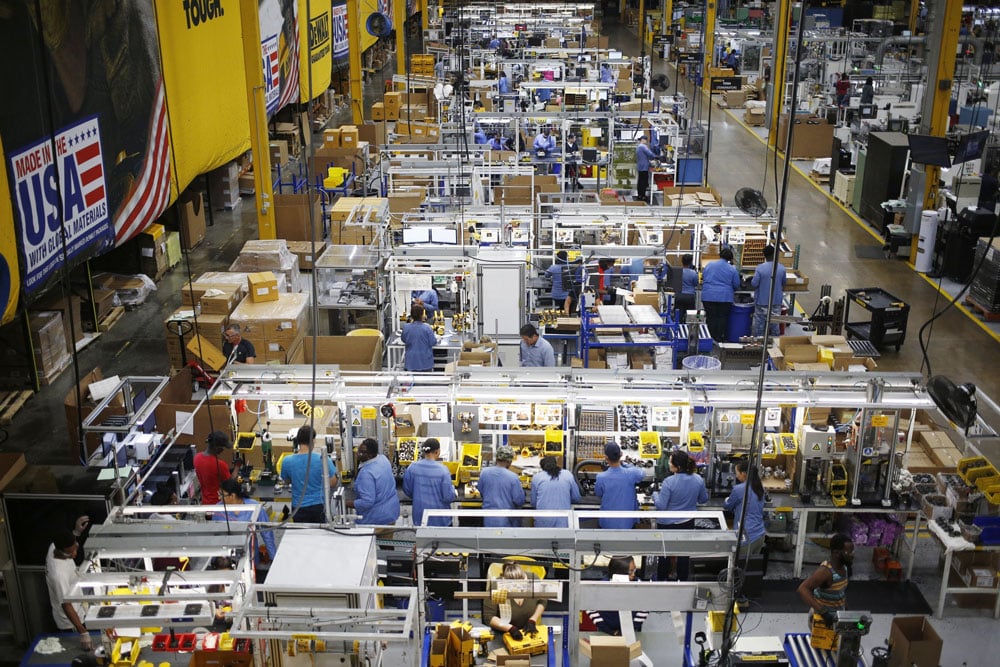Manufacturing is facing a worker shortage – chances are you know that already. But, if you’re trying to hire in the rural manufacturing labor market, you’re facing additional hurdles. Yet, the solution remains the same whether you’re a rural manufacturer or distribution center in the heart of a metropolitan area: flexible working.
In Deloitte’s 2021 study of the manufacturing workforce challenges, the authors noted consensus around one sentiment: “We can’t find the people to do the work.” In the report, 77 percent of surveyed manufacturers anticipated ongoing difficulties in attracting and retaining workers in 2021 and beyond.
Well, here we are in 2022, and we’re seeing the struggle continue, especially in rural manufacturing. One big issue? As Deloitte puts it, “getting entry-level employees in the door.” The study’s authors found many manufacturers can’t fill production associate positions, such as team assemblers, production work helpers, and hand-held tool cutters and trimmers. Even though these are entry-level roles that don’t require any technical skills in which following directions and willingness to learn are enough to start.
In rural manufacturing, the challenge is further compounded by the smaller pool of candidates within 30 miles of the plant. An exec quoted in the Deloitte survey said, “Is there a point when we run out of production workers or a point when we have to consider moving to a different location?” Any manufacturing leader in rural America can relate to this worry.
Burning through rural resources
Part of the problem in a rural environment is how easy it is to burn through the available labor pool. Gone are the days when everyone went to work at the same factory and stood on the line for decades. In today’s world, you recruit people, you train them, and they work for awhile. However, the unreliability, absenteeism, and ghosting start soon after. The worker quits or is terminated because they can’t keep up with the demands for 10- to 12-hour shifts plus overtime.
In Tennessee, we recently met with a manufacturing business battling absenteeism rates as high as 50% – ouch. Forget about pursuing product innovation or continuous improvement. You can’t do those when your business doesn’t have the hands-on deck to address day-to-day operational needs.
At the same time, manufacturing isn’t going anywhere. It’s just that there are more jobs than people to fill them. COVID-19 exacerbated the problem with the outbreak reversing more than a decade of manufacturing job gains, according to Deloitte. Plus, workers who have long been with the company are starting to retire. Deloitte predicts, assuming a retirement age of 66, 2.1 million open positions in manufacturing will be difficult to fill by 2030.
The traditional temp-to-hire model isn’t working anymore. For one, if you can’t hire enough people to fill your full-time role that pays more and offers benefits, how can you expect temp labor to fill those slots? The idea of being a temp to “get a foot in the door and someday get hired” doesn’t appeal to today’s worker. Generally, the next generation of employees is not looking to work in a manufacturing or distribution environment for 40+ hours a week for the next 35 years.
Still, it’s not that they won’t do the work. It’s that employers need to shift their view of what constitutes a “good worker.”
Adapting to the new worker
Manufacturers can’t change the work. Even if they’re embracing Industry 4.0 and adding robotics and automation, the work is staying pretty much the same. How can we can get a reboot is the way people work.
Manufacturing is hard work. Often hot work. And 10- to 12-hour shifts are a big ask. So, don’t try to change people – change their schedules.
As one of our happy clients has observed, “flexibility is the new currency.” People are willing to do the work. But they don’t want to conform to the 40+ hours a week/you get five days off after six months model.
Instead, let people work the number of hours they want to work. We’ve seen time and time again, it’s not necessarily the job that keeps employees engaged. Rather, it’s how the employee works the job that’s important.
Taking a flexible approach opens manufacturers up to a new labor market. You can recruit retirees, college students, stay-at-home parents, and more. You hire them. You train them. And they remain loyal because they can work on their terms.
We often rehire people for our clients. HR may flinch at the idea but, we’re talking about bringing back the quality worker who quit because the schedule was too taxing. Or even the person who was termed because of absenteeism. They too could have been a good worker, but they just couldn’t keep up with the traditional labor model.
We have clients who offer incentive pay for averaging a certain number of hours a week. They aren’t paying out. On the other hand, we have a referral program where people get $25 for sharing their flex work opportunities with friends. We pay out monthly even more than expected because people like this type of work experience.
MyWorkChoice Case Study: Re-Engaging Previous Workers
MyWorkChoice was able to re-engage previous Roper GE Appliances workers in LaFayette, GA. These were well-trained and productive workers however, were let go because of a strict attendance policy. By offering a flexible schedule, MyWorkChoice re-hired 102 prior employees, within the first 30 days. Since the beginning of 2022 – MyWorkChoice continued to bring back highly trained workers that currently makeup 26% of the MyWorkChoice community.

Transforming rural hiring for manufacturing
Manufacturing jobs are important in rural economies. A manufacturing plant closing in a community reduces local employment, earnings, and government tax revenue. Instead of thinking about survival, or relocating to find a new labor force, rethink the rural manufacturing labor market.
Offering flexible work hours saves you from trying to swim upstream all the time. Instead, you realize the reality of the employee’s philosophy today. They’re ready to work, but they work only to maintain the lifestyle they want to live.
Leverage our expertise as the #1 flexible staffing agency for manufacturing, distribution, and light industrial facilities. Learn more by watching a digital demo today.





